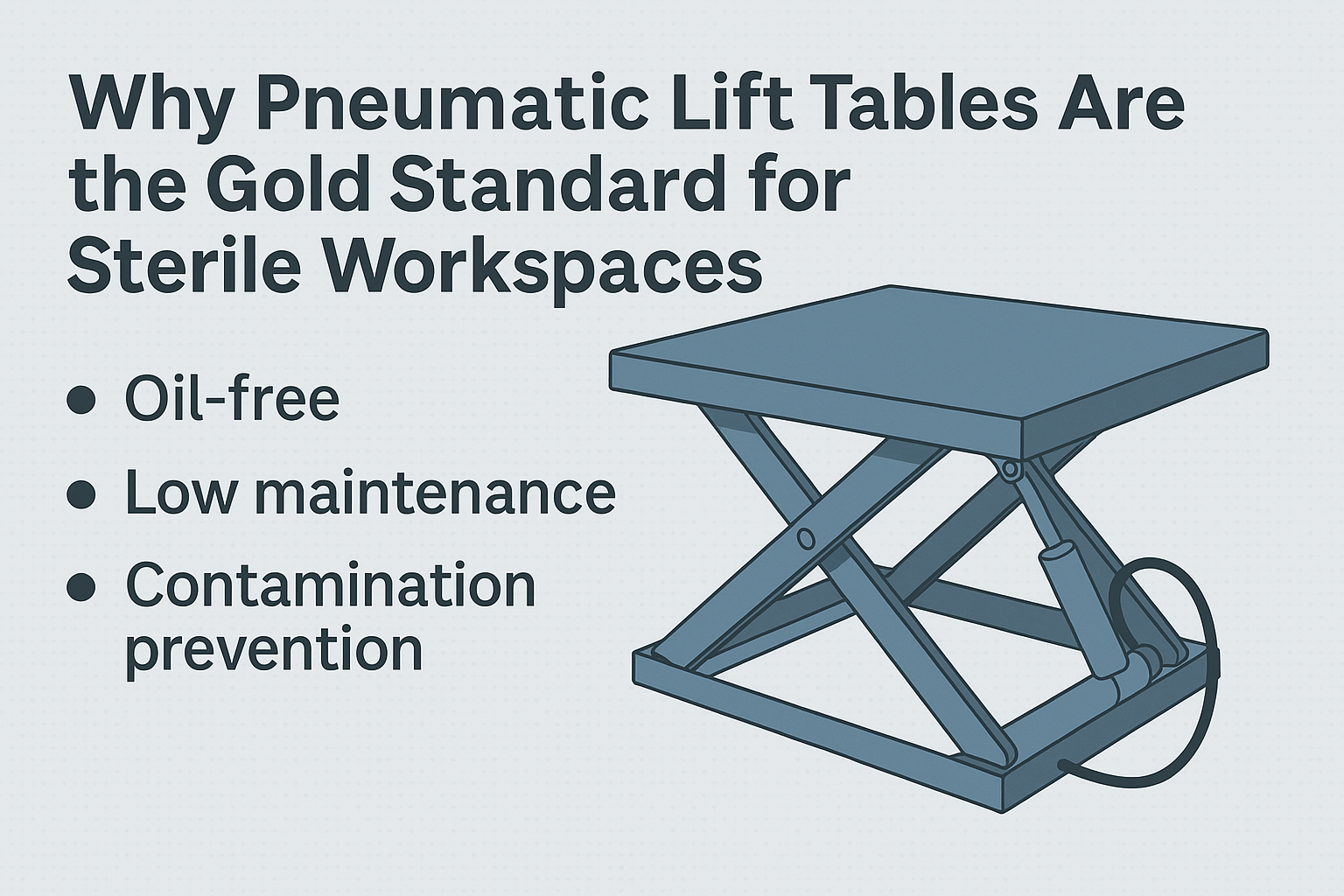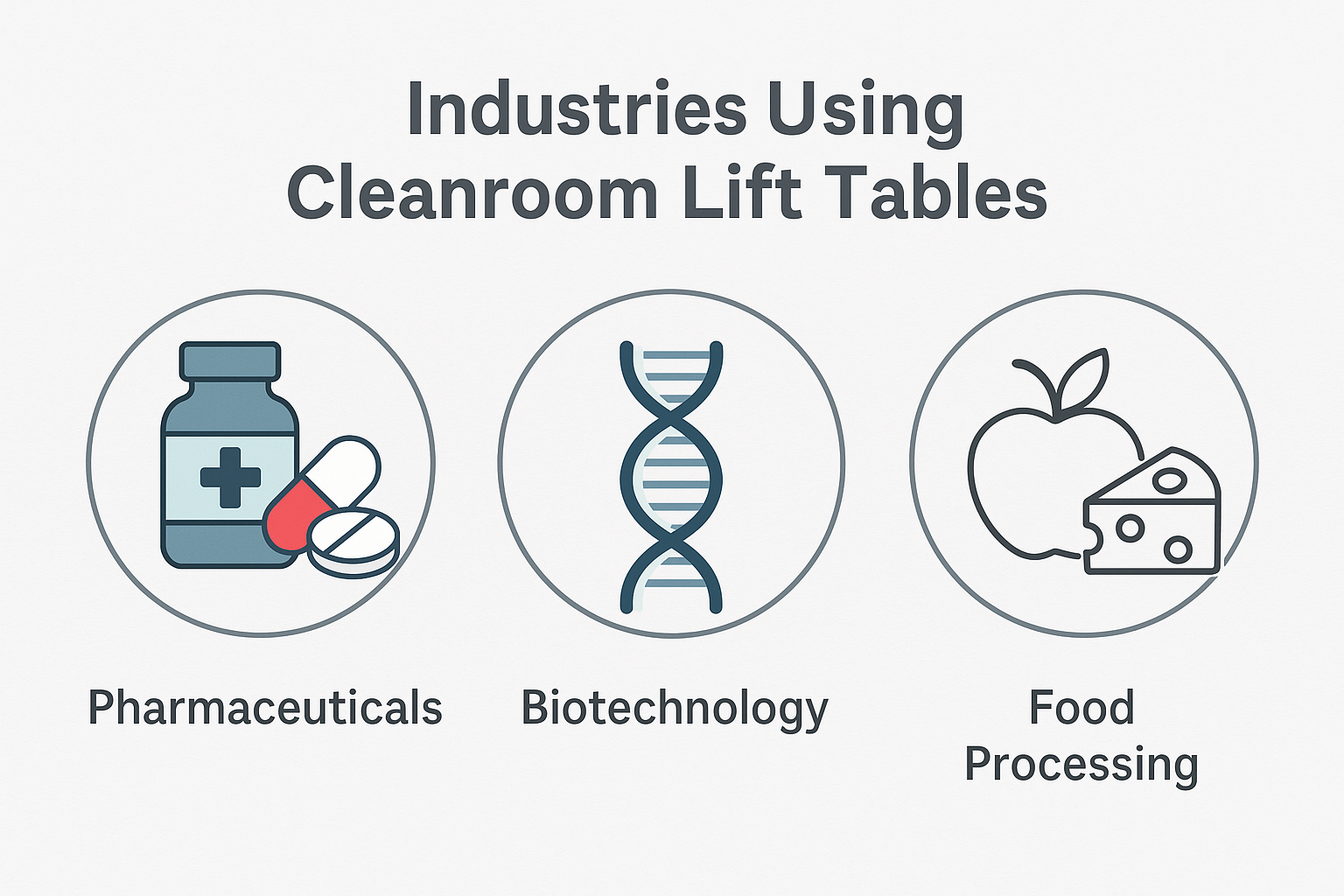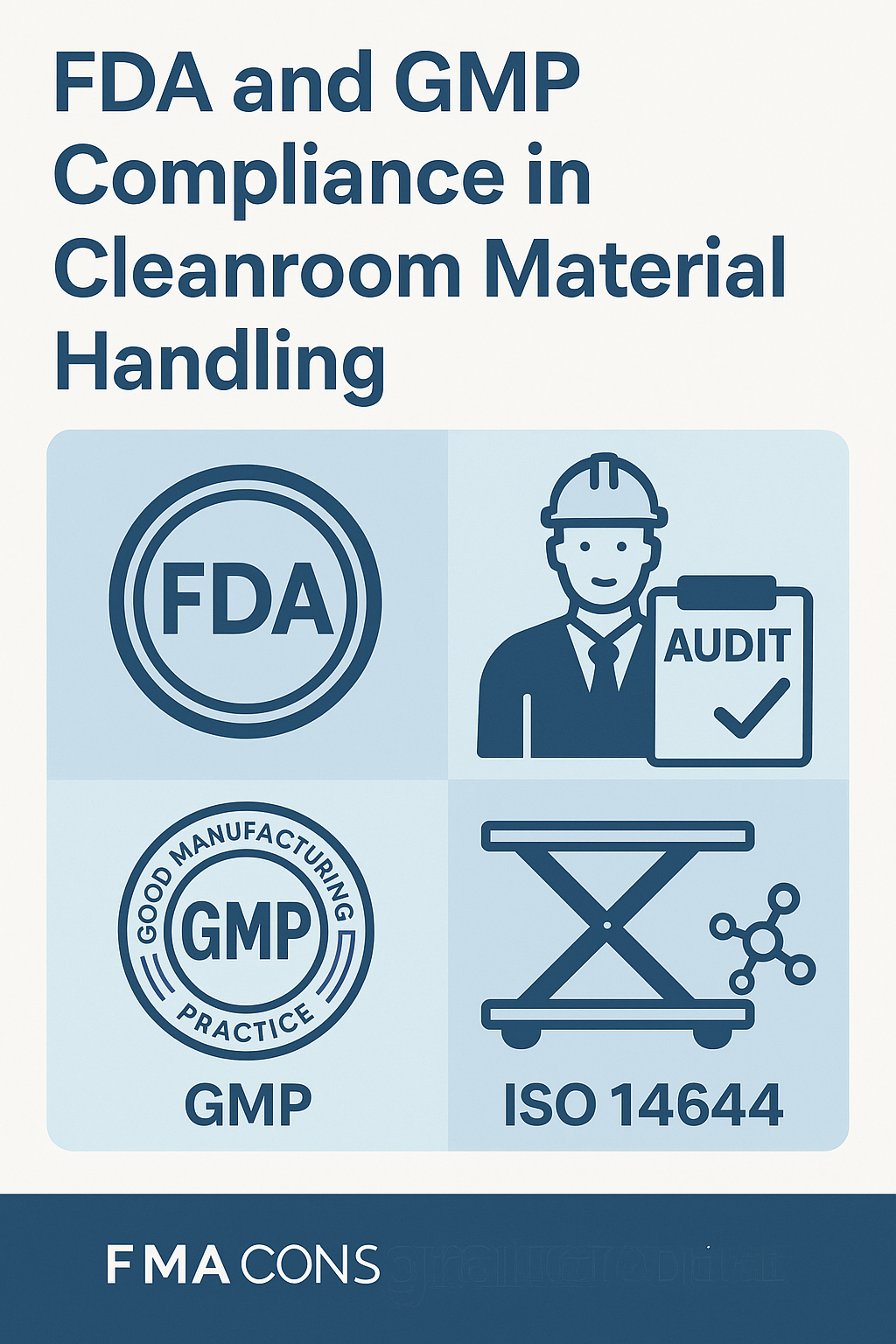
Why Pneumatic Lift Tables Are the Gold Standard for Sterile Workspaces
Explore why pneumatic lift tables outperform hydraulic and electric options in sterile environments. Clean, safe,
When it comes to cleanroom environments, the margin for error is zero. Whether you’re working in pharmaceuticals, biotech, food production, or semiconductor manufacturing, even a small leak or spark can lead to contamination, downtime, or regulatory penalties. That’s why pneumatic lift tables have become the preferred solution for professionals managing sterile workspaces.
In this article, we’ll explore why pneumatic systems outperform hydraulic and electric lift tables in sterile environments, and why they’ve earned the title of “gold standard” in contamination-sensitive industries.
Pneumatic lift tables are powered by compressed air rather than hydraulic fluid or electricity. They use air pressure to raise and lower loads, eliminating many of the mechanical risks associated with traditional lift systems. This simplicity in design makes them ideal for cleanrooms and GMP-compliant facilities.
Unlike hydraulic systems that rely on oil or fluid to generate lift, pneumatic tables operate entirely on air. This eliminates the risk of leaks, which is crucial in sterile environments where even trace contamination can ruin products or trigger compliance issues.
These tables are often constructed using 304L or 316L stainless steel, with minimal welds and easy-to-sanitize surfaces. This design aligns with ISO 14644 cleanroom classifications and FDA/GMP standards.
Because they don’t require electrical power or flammable fluids, pneumatic lift tables are safe for use in explosion-sensitive zones. This makes them an excellent choice for industries dealing with flammable solvents, powders, or high-oxygen environments.
Pneumatic systems are mechanically simpler than electric or hydraulic counterparts. Fewer moving parts mean fewer potential failure points, reducing the need for ongoing maintenance and repair.
If your facility already uses compressed air, pneumatic tables can be a cost-effective and energy-efficient solution. They integrate easily into your existing utility systems with no additional wiring or hydraulic infrastructure required.
| Feature | Pneumatic | Hydraulic | Electric |
|---|---|---|---|
| Contamination Risk | None | Medium (Fluid Leaks) | Low (Requires Sealing) |
| Cleanroom Compatibility | Excellent | Limited | Good (With Shielding) |
| Maintenance Needs | Low | High | Medium |
| Explosion-Proof | Yes | No | No |
| Energy Source | Compressed Air | Hydraulic Fluid + Pump | Electric Motor |
Pneumatic tables are especially useful for:
Modern pneumatic lift tables can be tailored to your workflow with options like:
Pneumatic lift tables offer the cleanest, safest, and most reliable option for material handling in sterile environments. They help reduce maintenance, improve worker safety, and meet the strict standards of FDA, GMP, and ISO regulations.
If you’re looking for a long-term, worry-free solution for your cleanroom or controlled space, pneumatic is the way to go.
🔗 Explore FDA-compliant pneumatic lift tables here: Cleanroom Lift Tables – Industrial Man Lifts

Explore why pneumatic lift tables outperform hydraulic and electric options in sterile environments. Clean, safe,

From pharma to semiconductors, see how top industries use cleanroom lift tables to maintain compliance,

Understand what makes a lift table truly FDA and GMP compliant. Explore the must-have features,
Copyright 2025 All Rights Reserved – Industrial Man Lifts